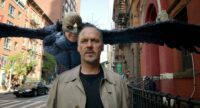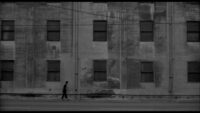The first season of True Detective kind of seems like Nic Pizzolato’s impression of a collaboration between Cormac McCarthy and H.P. Lovecraft. It would have been easy to take umbrage with a writer imposing himself on such sacred ground, were it not so well executed, but Christ on his throne, what a wonderful piece of television. It came as a downer to me then, when I discovered I wasn’t particularly enjoying season two of the series, something I attributed to my personal distaste for Colin Farrell–not that he’s a bad actor, quite the contrary, he’s solid. My aversion is purely arbitrary. Just as adding coconut to any recipe will ruin a dish for me, the presence of Colin Farrell seems to spoil film and television, and for the same non-reason.
Just not a fan.
So I wasn’t planning to watch The Killing of A Sacred Deer, starring the aforementioned Colin Farrell, but a friend of mine sliced open the palm of my hand with a box cutter and made me swear a blood oath that I would at least give it a chance. Anthony has no idea that I don’t actually recognize the authority of blood oaths, or any kind of oath, really. But I’ll never tell him, because pretending to buy into the delusions of my friends has proven to be useful in certain situations.
Speaking of mental illness being exploited, if you’re currently battling hopeless, maniacal depression, verging on a total psychotic break, and I usually am, The Killing of A Sacred Deer will only push you closer to the edge of madness. Most folks would be deterred by such a quality, but I’ve always opined, art which fails to kick me into an existential crisis, is a waste of my time. It wasn’t the unique score or the strange dialogue I initially found intriguing. Rather, it was Director Yorgos Lanthimos’ perfect usage of the slow pan and meticulously well crafted framing of every shot which first enamored me. The Killing of A Sacred Deer’s cinematic precision and attention to detail of aesthetics can only be described as Kubrickian. Every shot of this film is paced and framed beautifully, while the constant subtle camera motion and notably peculiar score allows atmosphere to become the main character of the movie. Fans of The Shining and Eraserhead will consider this film a gift.
Just as an aside, my recommendation is to go into The Killing of A Sacred Deer completely blind. The movie is loaded with left turns and carries an unmistakable sense of mystery and suspense, which will only add to your mortification and/or enjoyment. Alternatively, you can continue reading this article and find out all sorts of plot points, whichever you prefer.
Nothing sells me on a movie quicker than confused and outraged audiences. Whether the movie is ultimately good or bad is of little importance, the bottom line is, if people are upset, the movie must at least be interesting. Most people will find themselves disturbed by the unrelenting bleakness in The Killing of a Sacred Deer. If not disturbed, the hollowness of the dialogue delivery will certainly alienate the majority of viewers. This lack of regard for audience sensibilities, while bold and artistically sound, seems to have generated a lot of blow back, which is initially what piqued my interest, blood oath be damned. Darren Aronofsky’s Mother! didn’t particularly appeal to me either, until I began reading reports of livid audience members storming out of theaters. Boy, was that a fair indicator of an interesting picture or what? Whether or not you liked Mother!, it’s unlikely the movie ever bored you.
I can’t really blame the average movie-goer for being unhappy with films like The Killing of A Sacred Deer or Mother!. The ubiquity of formulaic cliché in modern cinema is as such, I can barely believe art films with a decent budget are still made. Even the most recent Star Wars entry gave casual movie fans post-traumatic stress disorder after being so brazen as to defy expectations and provide anti-climactic answers to burning questions.
These guys would last a day on the Twin Peaks train.
Who is Snoke? You mean who was Snoke? Snoke was a bad guy, that’s who Snoke was. Any other questions? Oh, Rey’s parents? Um, Harry Potter and Gwen Stefani. No, I’m kidding, it’s just two random people, no one important. Moving on…
Some say you can still hear the cry of the disappointed fanboys out there, pleading for The Last Jedi to be removed from cannon.
So, the fact that the customer reviews for The Killing of A Sacred Deer on Amazon are abhorrent should come as no surprise to anyone. Like Mother!, this movie is something of an antithesis to the current state of cinema.
Coincidentally, (or perhaps not, if you buy into the Jungian theory of Synchronicity) both Mother! and The Killing of A Sacred Deer involve children being killed, a clearly defined taboo in mainstream films. Lanthimos takes The Killing a step further by not only promising the death of a child halfway through the film but forcing the protagonist to choose which of his children it’s going to be. This movie does not play nice. What’s worse, it’s actually funny at times. If you can make it without laughing at all through the scene in which Colin Farrell’s character threatens to make his son eat his own hair, you just don’t know good comedy.
Why do people hate this film? Of course I can’t be certain, but I think in the case of many, especially parents, it forces people to ask themselves tough questions. Which of your children would you kill if you had to choose? Do all parents secretly have a favorite child?
To be fair, the latter question is a question no one really wants to answer.



I reviewed this too. I am quite liking Yorgos now due to this film and am making my way through them. I don’t have a favourite but I related the choices to be metaphoric. I almost had an epiphany over it. Great movie.